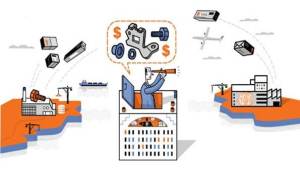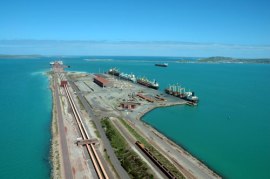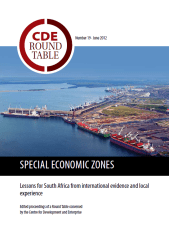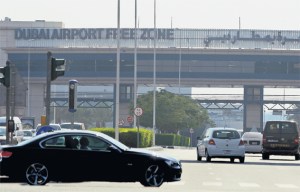 The roll-out of special economic zones is under way, with the first two in KwaZulu-Natal and the Free State to be proclaimed shortly, Trade and Industry Minister Rob Davies said yesterday.
The roll-out of special economic zones is under way, with the first two in KwaZulu-Natal and the Free State to be proclaimed shortly, Trade and Industry Minister Rob Davies said yesterday.
The Dube trade port and the Tshiame industrial development zone in Harrismith would both be transformed into special economic zones as soon as the regulatory framework had been established, which the minister said would take place within the next 100 days.
The regulations and guidelines would be finalised. The special economics zones board would be established, as would a one-stop-shop for fast-tracked support to investors.
The Dube trade port industrial development zone will specialise in high-value, niche agricultural and horticultural products, as well as manufacturing and value-addition for the automotive, electronics and clothing industries.
The Tshiame industrial development zone at Maluti-a-Phofung near Harrismith in the Free State will focus on automotive, clothing and agro-processing activities.
Mr Davies said the department was evaluating the feasibility of special economic zones focusing on the beneficiation and value-addition of platinum in Limpopo and North West. These zones would be used to encourage investors in beneficiation to locate their plants close to the mineral deposits.
“What we know is that significant opportunities to partner with international producers of fuel cells are available, and that these partnerships have the potential for SA to become an established hub for the production of fuel-cell components,” Mr Davies said.
“This would be a very significant development because fuel cells are new technology used for back-up power generation in telecommunication masts, base-load power generation in rural areas, and fuelcell passenger vehicles.
“This technology is fast becoming the subject of intense international competition for investment and is also a technology well suited to SA’s comparative advantage in platinum mineral resources.”
The department was assessing the feasibility of a solar industrial development zone in Upington in the Northern Cape.
“We have no doubt the support available through the special economic zones programme will lead to increased investment by the private sector and contribute to building new economic infrastructure in provinces,” the minister said.
The Saldanha Bay industrial development zone was well positioned to become a hub for oil, gas and marine repair, engineering and logistics. “An application to operate as a Customs Control Area to service the West and East African offshore oil and gas industry is being finalised. To date 18 companies, nine local and nine foreign, have signed nonbinding expressions of interest.”
The Coega, Richards Bay and East London industrial development zones had together generated R3.4bn in investments and created more than 67,000 direct and indirect jobs. A number of new investments worth several billion rand were also under negotiation. Source: SAnews.gov.za
 The South African Cabinet has ratified a decision by the Department of Trade and Industry (DTI) to designate the Maluti-A-Phofung (MAP) logistics hub, in Harrismith, in the Free State, an industrial development zone (IDZ), further approving the granting of operator permit for this zone to the Free State Development Corporation.
The South African Cabinet has ratified a decision by the Department of Trade and Industry (DTI) to designate the Maluti-A-Phofung (MAP) logistics hub, in Harrismith, in the Free State, an industrial development zone (IDZ), further approving the granting of operator permit for this zone to the Free State Development Corporation.
 A draft Notice for the rules under section 21A relating to Special Economic Zones has been made available for public comment. The draft rule amendments proposed under section 21A refer to the substitution of Industrial Development Zone (IDZ) for Special Economic Zone (SEZ). The draft rules can be accessed on the
A draft Notice for the rules under section 21A relating to Special Economic Zones has been made available for public comment. The draft rule amendments proposed under section 21A refer to the substitution of Industrial Development Zone (IDZ) for Special Economic Zone (SEZ). The draft rules can be accessed on the  The roll-out of special economic zones is under way, with the first two in KwaZulu-Natal and the Free State to be proclaimed shortly, Trade and Industry Minister Rob Davies said on Wednesday.
The roll-out of special economic zones is under way, with the first two in KwaZulu-Natal and the Free State to be proclaimed shortly, Trade and Industry Minister Rob Davies said on Wednesday.





![Minister Pravin Gordhan and his 'budget team' on their way to parliment [Picture credit-SARS]](https://mpoverello.com/wp-content/uploads/2013/03/budget-2013.png?w=730&h=292)






You must be logged in to post a comment.